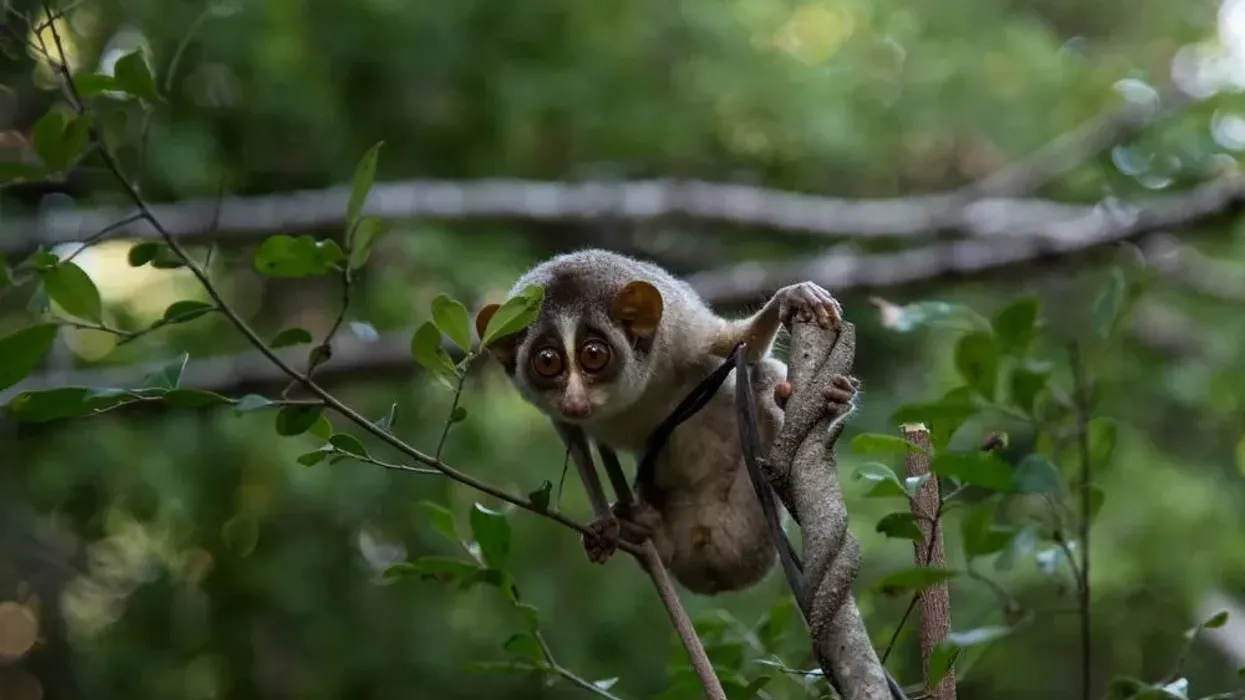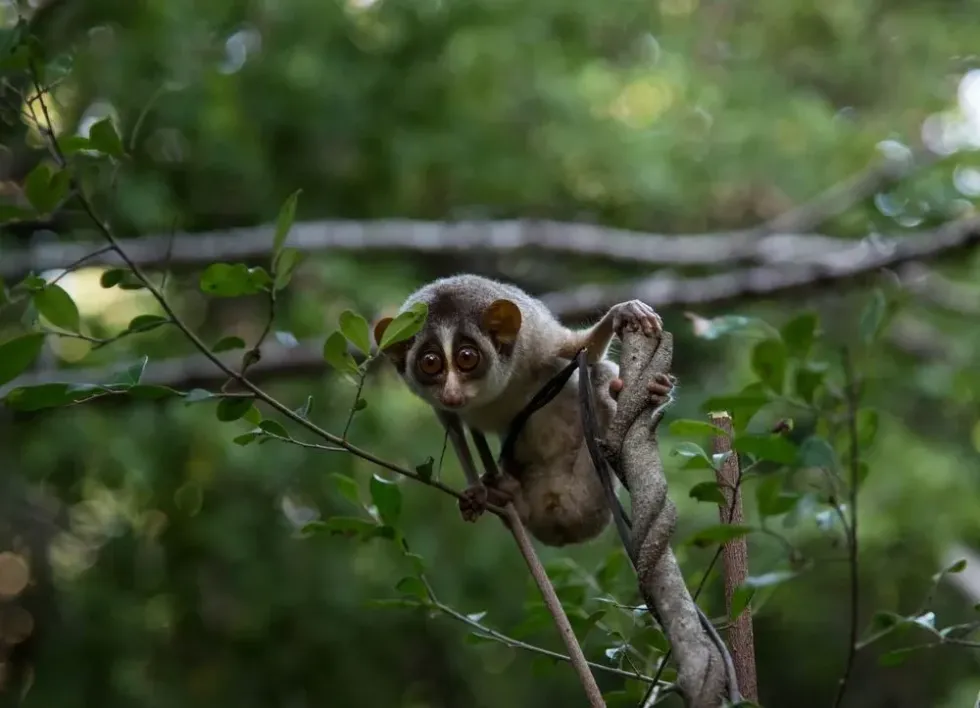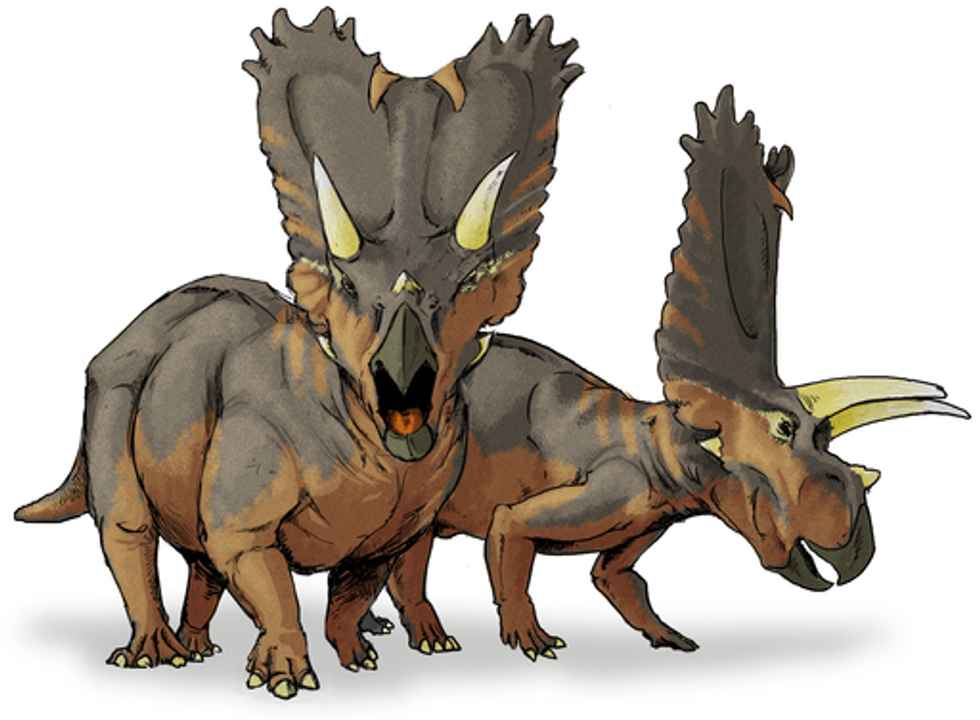If you are an animal lover and want to know more about primates then you should check out this article.
The slender loris aka Loris tardigradus is a species of primates that are found in the hot and humid climate and tropical rainforests of South Asian countries of India and Sri Lanka.
Found in India, especially Southern India, the slender loris habitat involves tropical rainforests and semi-deciduous forests, and the wet zone of the forests of Sri Lanka. The slender loris diet consists of small reptiles, insects, and leaves. They are nocturnal creatures i.e they are mostly active at night.
The red slender lorises fall in the list of threatened species, while the gray slender loris aka Loris lydekkerianus is listed as Least Concern in the International Union for Conservation of Nature or IUCN Red List. The main reason for its threat is the loss of habitat.
Loris lydekkerianus or the gray loris, much like the slender loris is also found in Sri Lanka and Southern India.
The slow loris which is found in the northern part of India and in Bangladesh is a poisonous mammal. They usually move slowly so as to avoid any sort of contact with other species and thereby moving unnoticed by anyone.
If you find this interesting then do continue reading and if you want to know more information about these types of mammals, do check out ring-tailed possum and pygmy slow loris.
Slender Loris Interesting Facts
What type of animal is a slender loris?
Slender lorises are a type of primate that belongs to the family of Lorisidae and genus loris.
What class of animal does a slender loris belong to?
Slender loris belongs to the class of Mammalia in the Animalia kingdom.
How many slender lorises are there in the world?
As the slender loris (Loris tardigradus) is an endangered species of primates and their number is constantly on the decline, there are less than 2500 individuals of this species today.
Where does a slender loris live?
Like all primates, the slender loris lives in forests and the wild wet zones of the jungles. They are found extensively in the tropical deciduous forests in Sri Lanka and the southern farmlands of India. These small animals prefer living in dense bamboo bushes where they can catch insects and easily escape from their predators.
What is a slender loris's habitat?
Slender lorises are extensively found in the southeastern part of Asia, namely Sri Lanka and India, in tropical rainforests. Along with the forests, the slender loris is also found in swamps, semi-deciduous forests, scrub forests, and lowland forests.
Who do slender lorises live with?
The slender loris is an extremely active animal that loves interacting with other animals of its own species. These nocturnal animals are known to hunt in pairs or on their own. However, these animals become extremely social at dawn and dusk.
How long does a slender loris live?
The slender loris has a lifespan of approximately around 12 - 15 years in the wild.
How do they reproduce?
The slender loris mates twice a year. The first mating season begins in April and continues until May while the second mating season begins in October and ends in November.
The females give birth to one baby slender loris during each mating period. The gestation period ranges for a span of approximately around 166 -169 days.
After the baby is born it usually the mothers who take care of the young ones for the initial few weeks. The entire span of reproduction from mating to the independence of the young primate takes place with a span of 300+ days.
The males are known to attract the females by the well-known process of courtship which involves numerous vocalization techniques.
The babies are known to cling tightly to their mothers during the first four weeks after birth. These primates acquire sexual maturity at an age of around 10 months.
What is their conservation status?
According to the International Union for Conservation of Nature or IUCN Red List, the slender loris is marked as Endangered due to habitat loss and pet trade. In India, according to the Wildlife Protection Act, the slender loris has been provided with the highest possible level of legal protection to conserve this species.
The Indian government has been working on its conservation by protecting its habitat.
Slender Loris Fun Facts
What do slender lorises look like?

These small primates have very slender, long, and thin arms with brown coat hair. They have no tails, despite being arboreal animals. They have a small round face with bulging brown eyes. Usually, the forelimbs are smaller than the hind limbs. They also have a characteristic white stripe from their forehead to their nose.
How cute are they?
Slender lorises are extremely adorable. Their small body with gigantic bulging eyes makes them extremely cute.
How do they communicate?
As slender lorises are nocturnal animals they communicate and hunt their prey all through the night. These animals are also extremely active during the dusk and the dawn and form their own social groups.
Their main mode of communication is by vocalizations. These sounds involve the likes of growls, chitters, whistles, krik calls, and others.
The whistles are quite loud and can be heard by humans as far as 328ft or 100m away. The whistles ideally consist of three syllables and they help in indicating the temperament of the slender loris being either excited or it being aggressive.
Whistles are also a means of communication with others over a long distance, especially in the wildlife. These animals also use chitter which indicates the defensive stance of the creature. For females, chitters can be used as a method of the response of replying to the mate courtships.
The infants are known to use zic calls which they primarily use to gather the undivided attention of their mothers. However, the high intensity of zic calls indicates the response to fear and pain.
Krik calls are mostly used by males which are used for courting purposes. Females too use krik calls as a method of response to these mating calls.
Lastly, the growl is also used by these small animals. The growl is extensively used against the predators and they are closely associated with the defensive attribute of the slender loris.
Apart from vocalizations these nocturnal primates also use the method of scent exchanges to pass information from one to another. These animals are known to deposit urine at regular intervals which serve as a means of communication among these animals which are found in India and Sri Lanka.
Scent marking is an active part of the social communication among these species.
These animals also have active body language which depicts their state of mind. Be it sexual maturity, fear, or aggression, all these signs can be read from their body language if they are observed closely and correctly.
How big is a slender loris?
The slender loris can be termed as small animals as they have a mere length of just under 10 in or 25 cm. They have extremely long and thin arms along with a small body that roughly weighs around 10 oz or 275 g.
How fast can a slender loris run?
The movements of the slender loris are quite slow, however, these arboreal animals are excellent tree climbers and can be seen to climb trees at a fast speed when they are chased or threatened by any predator.
How much does a slender loris weigh?
The weight of a slender loris is around 10 oz or 275 g.
What are their male and female names of the species?
There is no distinct name that determines the males and females of the slender loris. They can be just called males or females.
What would you call a baby slender loris?
A baby slender loris is called an infant.
What do they eat?
The slender lorises are omnivores, which means that they feed on both plants and animals. Their diet consists mainly of insects, eggs of birds, leaves, slugs and flowers. Part of their prey list also involves lizards and other small reptiles.
Are they aggressive?
The Slender lorises are solitary animals and it's best to leave them alone. They are extremely shy however, they are known to get aggressive or might even lash out if any contact is made with them. With the superb use of their hands and feet, they climb trees to escape contact from other animals.
Would they make a good pet?
No. They would not make a good pet. First of all, keeping a slender loris as a pet is illegal in many countries and secondly, since they are an endangered species, they should be conserved and not be kept as pets.
Did you know...
This little primate has a lot of unique and interesting characteristics. Among many of them is the practice of washing their faces and limbs with their own urine. It is probably considered to be a defense mechanism against the stings of poisonous insects.
The slender lorises are known to consume every part of their prey as they have the tendency to maximize the protein content. They usually forage alone and are primarily insectivorous animals.
Are slender lorises poisonous?
The slender loris and the slow loris are known to bite. The bite of the slow loris is poisonous but the slender lorises bite might not be poisonous. However, the bite can come as a shock to many humans.
What are slender loris' predators?
There is a long list of predators of the slender loris. They comprise mainly of raptors and felids. Civets and genets are also known to hunt the slender loris.
Here at Kidadl, we have carefully created lots of interesting family-friendly animal facts for everyone to discover! Learn more about some other animals including marsupials, and the Sumatran orangutan.
You can even occupy yourself at home by drawing one on our slender loris coloring pages.









